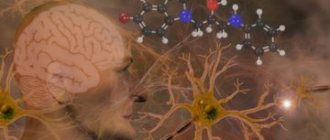The main feature is the repeated presentation of somatic symptoms simultaneously with persistent demands for medical examinations, despite repeated negative results and assurances from doctors that the symptoms are not of a somatic nature. If the patient has any physical illnesses, they do not explain the nature and severity of the patient's symptoms or suffering or complaints.
Excluded:
- dissociative disorders (F44.-)
- hair pulling (F98.4)
- childish form of speech [babble] (F80.0)
- lisp (F80.8)
- nail biting (F98.8)
- psychological and behavioral factors associated with disorders or diseases classified elsewhere (F54)
- sexual dysfunction not due to organic disorders or diseases (F52.-)
- thumb sucking (F98.8)
- tics (in childhood and adolescence) (F95.-)
- de la Tourette syndrome (F95.2)
- trichotillomania (F63.3)
Diagnosis F 45.0 Somatization disorder
The main features are numerous, repeated, frequently changing physical symptoms, occurring over a period of at least two years. Most patients have a long and complex history of contact with primary and secondary care services, during which many inconclusive tests and futile diagnostic manipulations may have been performed. Symptoms can relate to any part of the body or organ system. The course of the disorder is chronic and intermittent and is often associated with disturbances in social, interpersonal and family behavior. Short-term (less than two years) and less severe examples of symptoms should be classified as undifferentiated somatoform disorder (F45.1).
Briquet's disease
Multiple psychosomatic disorder
Excluded: simulation [conscious simulation] (Z76.5)
last modified: January 1999
Somatoform disorder (psychosomatic illness) - symptoms and treatment
Patients with this disorder do not see a connection between psychological experiences and clinical manifestations of the disease. They are fixated on physical (somatic) symptoms and are focused mainly on drug treatment from therapists.
Most often, people with somatoform disorder are bothered by various pains (algias), while painful manifestations are not always symptoms of organ pathology. Such painful sensations caused by mental disorders are encountered quite often. As a rule, they are not relieved even by strong analgesics. This is especially true for psychogenic headaches, which are more common than other headaches combined. The most common headaches are cephalgia (in the area from the eyebrows to the back of the head).
Gastrointestinal disorders, particularly constipation and diarrhea, often occur. From a psychoanalytic point of view, a tendency to constipation may indicate greed, a person’s reluctance to part with something. Diarrhea (we are not talking about a single diarrhea, but about a protracted or frequently recurring problem) can be a reaction to severe fear and severe anxiety. Diarrhea is an “escape” from a problem that cannot be comprehended.
The emotional manifestation of somatoform disorder includes depression. It is associated with self-directed aggression. Physical manifestations mainly include coronary heart disease, surges in blood pressure, and peptic ulcers of the stomach or duodenum. The latter is more often typical for people who do not know how to recognize aggressive emotions in themselves, such as irritation, anger, anger. Trying to prohibit oneself from experiencing them, not knowing how to express them in an “ecological” way, a person destroys himself from the inside.
Suppression of feelings of anxiety and fear, especially when their causes are unclear, cause a cascade of psychophysiological reactions (previously this was called a sympathoadrenal crisis).
In the primitive world, the source of the threat that caused fear was obvious - for example, an encounter with a bear. In this case, there were only two response options - hit or run. In modern society, the threat is not so obvious, and social norms and attitudes impose their own “prohibitions” on the manifestation of reactions. In this regard, panic and horror unfold inside a person, causing a cascade of vegetative reactions - cold sweat breaks out, the heartbeat quickens, blood pressure jumps against the background of the production of stress hormones, breathing becomes shallow and frequent. And here secondary anxiety arises, and with it the fear of loss of control, the onset of a heart attack, stroke and death. Often such patients call an ambulance, are repeatedly examined by therapists, cardiologists, neurologists and endocrinologists, undergo a series of diagnostic and laboratory tests and, not finding the cause of fear in diseases of the internal organs, are referred to a psychotherapist with a diagnosis of “Panic attack”.
Frequent throat diseases (sore throat or tonsillitis) may indicate a person’s fear of saying something or asking for something very important. Sometimes such people are afraid to raise their voice in their own defense and thereby “lose” it.
Bronchial asthma, like some other diseases associated with respiratory failure, occurs more often in people (mainly children) who are pathologically strongly attached to their mother. Their love is literally “suffocating.” Another option is parents’ strictness when raising a son or daughter. If a person is taught from a very early age that it is forbidden to cry, that laughing loudly is indecent, that jumping and running in the street is the height of bad form, then the child grows up afraid to express his true feelings and needs: they gradually begin to “strangle” him from the inside.
Neurodermatitis, psoriasis, atopic dermatitis, urticaria, like most diseases related to allergies, may indicate a rejection of something. The skin is the first protective psychological barrier, so its disease indicates a violation of a person’s psychological boundaries.
Diagnosis F 45.2 Hypochondriacal disorder
The most important feature is the patient's persistent concern about the possibility of having a severe, progressive disease or several diseases. The patient presents persistent somatic complaints or shows persistent anxiety about their occurrence. Normal, ordinary sensations and signs are often perceived by the patient as abnormal and disturbing; he usually focuses his attention on only one or two organs or systems of the body. Significant depression and anxiety are often present, which may explain additional diagnoses.
A disorder characterized by preoccupation with one's own health
Dysmorphophobia (non-delusional)
Hypochondriacal neurosis
Hypochondria
Nosophobia
Excluded:
- delusional dysmorphophobia (F22.8)
- delusions focused on the functioning or appearance of one's own body (F22.-)
Somatoform disorder
About 13% of the population has somatoform complaints during their lifetime, and in the practice of therapists, the frequency of patients with somatoform disorders can reach 35%. Those. approximately every fourth patient consults a doctor with complaints that do not have a sufficient organic nature. The manifestations of somatoform disorder are varied; two main options can be distinguished:
- Somatization disorder – complaints about various, changing, “migrating” discomfort sensations throughout the body;
- Somatoform autonomic dysfunction - complaints relate to a separate organ or system of the body, most often the cardiovascular, gastrointestinal, and respiratory systems.
Both of these variants of the disorder bring a lot of suffering to the patient and disrupt the quality of life of him and his loved ones. Somatologists cannot find an explanation for these symptoms and, as a result, cannot help with treatment. Meanwhile, if left untreated for a long time, somatoform disorders can lead to the following problems:
- narrowing of the social space of life (refusal of communication, active recreation, career growth, relationships, etc.);
- morbid preoccupation with health, fixation on tracking symptoms, irrationally frequent visits to doctors and initiation of useless studies, sometimes expensive and painful;
- development of secondary depression, anxiety disorder;
- conflicts in the family due to lack of understanding on the part of relatives of the patient’s condition.
If you or your loved ones have a similar situation in life, visit a psychiatrist or psychotherapist to diagnose or rule out this disorder. With timely diagnosis and proper treatment, the symptoms of somatoform disorder can be leveled or completely eliminated.
Nature of somatoform disorder
Modern science considers many mental disorders, including somatoform ones, as diseases to which various causes contribute: biological, psychological and social.
That is why the treatment of these disorders requires both medication and socio-psychological intervention. Biological factors.
The fact that an examination of a patient with a somatoform disorder does not reveal an organic cause for his symptoms does not mean that biological factors are not involved in the occurrence of this illness. As a rule, somatoform disorder develops as a reaction to real changes in the state of the central nervous system, as well as the endocrine and immune systems. These changes can be provoked by different types of stress - social troubles (job loss, economic crisis), interpersonal (conflicts in the family, with friends), biological (the period after a long debilitating illness). A certain genetic predisposition also plays a role - for example, a constitutionally reduced threshold of pain sensitivity, a reduced content of endorphins in the body, etc. Also important is the individual response of the hypothalamic-pituitary system of the brain and the level of cortisol (stress hormone) in response to the onset and end of a stressful situation. situations. Patients with somatoform disorder, like patients with depression, demonstrate elevated cortisol levels in the morning. Long-term stressful events can introduce the above-described disturbances in the functioning of the hypothalamus and pituitary gland and change the biochemistry of the nervous system and lead to the occurrence of somatoform disorder. Psychological factors. The psychological model is based on the idea of the importance of the role of such emotions as anxiety and the “vicious circle” of anxiety - the patient is faced with some unpleasant sensations in the body caused by a physiological shift in the work of the autonomic nervous system (increased heart rate in response to physical activity, increased breathing in response to hot and stuffy weather, etc.), but interprets this incorrectly - as something threatening, firmly associating these sensations with anxiety. Further, he may not notice the anxiety at all, but it is transformed into various kinds of bodily symptoms, which, in turn, further intensify anxiety and fear. Social factors. The spread of somatoform disorder is associated with the peculiarities of modern culture of society - a high level of urbanization, increased stress - high pace of life, frequent changes, multitasking, intense psycho-emotional stress, lack of close and trusting relationships, etc. Modern trends also contribute - the cult of success and well-being, high competition - all this forces us to hide our difficulties without receiving timely psychological release.
Diagnosis F 45.3 Somatoform dysfunction of the autonomic nervous system
The symptoms presented by the patient are similar to those that occur when an organ or organ system is damaged, predominantly or completely innervated and controlled by the autonomic nervous system, i.e. cardiovascular, gastrointestinal, respiratory and genitourinary systems. Symptoms are usually of two types, neither of which indicate a specific organ or system disorder. The first type of symptoms are complaints based on objective signs of autonomic irritation, such as palpitations, sweating, redness, tremors, and expressions of fear and anxiety regarding possible health problems. The second type of symptoms are subjective complaints of a nonspecific or variable nature, such as fleeting pain throughout the body, a feeling of heat, heaviness, fatigue or bloating, which the patient relates to some organ or organ system.
Cardinal neurosis
Da Costa syndrome
Gastroneurosis
Neurocirculatory asthenia
Psychogenic forms:
- aerophagia
- cough
- diarrhea
- dyspepsia
- dysuria
- flatulence
- hiccups
- deep and rapid breathing
- frequent urination
- irritable bowel syndrome
- pylorospasm
Excludes: psychological and behavioral factors associated with disorders or diseases classified elsewhere (F54)
Symptoms of somatoform disorder
Symptoms can be different and resemble all existing internal and neurological diseases. The most common:
- Headaches, dizziness, nausea.
- Unpleasant sensations in the gastrointestinal tract: Pain in the esophagus, stomach, liver and intestines. Heartburn, belching, bloating, constipation or diarrhea.
- Pain in the heart area, sensations of palpitations and interruptions in heart rhythm.
- Feeling of lack of air, feeling of incomplete inspiration.
- Temperature rises above 37 degrees C. Less commonly, temperature drops below normal.
- Pain in the back, neck, lower back, perineum.
- Cramps.
- Joint pain, stiffness in movement.
Somatoform disorders are characterized by prolonged repetition of the same complaints. But there are also cases when some symptoms are replaced by others, their localization changes - in such cases they talk about such a variety as somatization disorder (F 45.0 code according to ICD-10).
Diagnosis F 45.4 Persistent somatoform pain disorder
The chief complaint is persistent, sharp, excruciating pain that cannot be fully explained by a physiological disorder or medical illness and that arises from emotional conflict or psychosocial problems, which allows it to be considered as the main etiological cause. The result is usually a noticeable increase in support and attention of a personal or medical nature. Pain of a psychogenic nature that occurs during a depressive disorder or schizophrenia cannot be classified under this category.
Psychalgia
Psychogenic:
- backache
- headache
Somatoform pain disorder
Excluded:
back pain NOS (M54.9)
pain:
- NOS (R52.9)
- acute (R52.0)
- chronic (R52.2)
- fatal (R52.1)
tension headache (G44.2)
Somatoform disorders: paradoxes of mind and body
Moving on to treatment methods, it is worth noting that there is no single standard or protocol for the management of such patients. Often the only tool to relieve symptoms is the doctor himself. 75% of patients with unexplained symptoms are satisfied with the feeling that the doctor understands them. A well-constructed conversation in a confidential tone can dramatically reduce attendance at the clinic. In the remaining 25% of somatoform patients, the need for drug therapy is determined by:
– severity and duration of symptoms;
– the presence of comorbid mental and somatic diseases;
– level of impairment (therapeutic intervention is determined not by the presence of complaints, but by the degree of impairment of the patient’s functioning);
– concomitant therapy, taking into account previous experience of drug tolerance.
In the treatment of anxiety-depressive disorders and their somatized manifestations, drugs of different classes are used, but most often anxiolytics, tranquilizers (barbiturates, benzodiazepines, etc.) and antidepressants.
It should be remembered that the prescription of tranquilizers, which cause short-term relief of some of the patients' complaints, does not have strategic advantages in long-term therapy.
Most tranquilizers traditionally popular in the practice of Ukrainian doctors (for example, various forms of phenobarbital) have the following disadvantages:
- rapid development of tolerance to their therapeutic effects;
- severe complications from overdose;
- high risk of addiction.
Traditionally, since the early 1970s, amitriptyline has been included in treatment regimens for functional disorders in neurological and therapeutic practice, but today the priority of the use of more modern antidepressants - selective serotonin reuptake inhibitors (SSRIs) (for example, sertraline, escitalopram) should be recognized. , serotonin and norepinephrine reuptake inhibitors (SNRIs) (venflaxin, desvenlafaxine), which, with the same or higher antidepressant efficacy, are devoid of a wide range of side effects of tricyclic derivatives. Today, it should be recognized that amitriptyline is one of the most unsafe drugs for use in outpatient practice.
When prescribing drug therapy, you should strive for the simplest regimen, but provide alternative options. For example, autonomic manifestations that cause anxiety can be alleviated by short-term administration of benzodiazepines. Another way is possible - by using antidepressants, to help a person develop a rational attitude towards choosing a way to avoid disturbing circumstances. In studies, this was reflected in the normalization of the time to comprehend a verbal reaction: the use of SSRIs in patients with anxiety disorders helped reduce this time to the levels of a conditionally healthy person.
It should be taken into account that when identifying the dominant role of anxiety symptoms in the structure of an affective disorder, the maximum permissible dosages of serotonergic antidepressants should be prescribed. For example, if the average therapeutic dose of sertraline (Zoloft) for depression is 100-150 mg, then for generalized anxiety disorder (GAD) or somatoform disorder - 150-250 mg. The duration of pharmacotherapy should be at least 4-6 months.
The recognition of functional (somatoform) pain disorders, their combination with other anxiety and depressive disorders and modern aspects of their treatment deserve special consideration. In the treatment of these conditions, an important role is played by the use of combinations of modern drugs such as pregabalin (Lyrica) and dual-spectrum (serotonin/noradrenergic) antidepressants (for example, desvenlafaxine - Elifor) or SSRIs.
From the table above it can be seen that by using a combination of pregabalin (Lyrica) with a modern antidepressant, it is possible to achieve a balanced treatment effect for both somatic and psychopathological manifestations of anxiety.
A very interesting Spanish study was in which pregabalin at a dose of 150-600 mg per day was added to previous SSRI therapy in patients with GAD and insufficient therapeutic response (E. Alvarez et al., 2015). Combination therapy provided greater benefit compared with switching to an alternative SSRI or another anxiolytic. In the combination treatment group, there was a significantly greater improvement in the Hamilton Anxiety Scale, the Montgomery-Åsberg Depression Scale, and self-assessment of quality of life by study participants.
In conclusion, I note that the relevance of the topic of recognition and treatment of somatoform disorders is due not only to the prevalence of these conditions. This topic reflects modern requirements for the integration of the work of psychiatrists into the somatic service system. At the level of primary care or specialized somatic care, common signs of emotional distress can be recognized behind the façade of unusual complaints. The necessary therapy can be prescribed taking into account the patient's preferences. Collaboration with a psychiatrist involves the possibility of clarifying the treatment regimen and carrying out specialized psychotherapeutic and rehabilitation measures.
Thus, the patient will avoid a long walk in a vicious circle with visits to numerous specialists - cardiologists, neurologists, gastroenterologists, rheumatologists and other doctors trying to find the cause of pain, malaise, decline and even loss of performance. In addition, the vigilance of internists regarding somatoform disorders and cooperation with psychiatrists will significantly reduce the costs of useless diagnostic and treatment procedures and increase patient confidence in specific specialists and in the health care system as a whole.
Diagnosis F 45.8 Other somatoform disorders
Any other disorders of sensitivity, function or behavior that do not arise from somatic disorders. Disorders that are not mediated through the autonomic nervous system are limited to specific systems or areas of the body and have a close temporal relationship with traumatic events or problems.
Psychogenic:
- dysmenorrhea
- dysphagia, including globus hystericus
- itching
- torticollis
Teeth grinding








